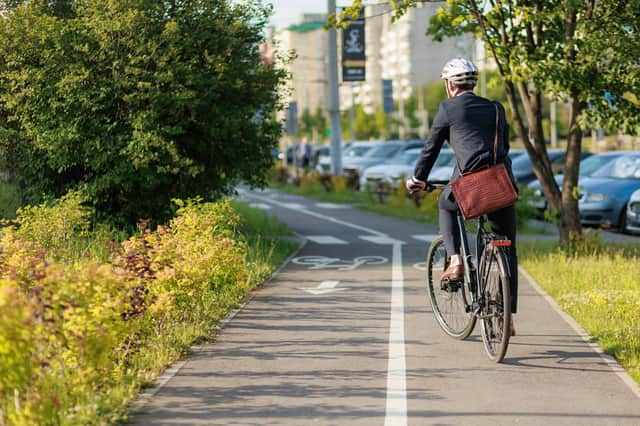Going Green: Cycling is great for our health and our climate goals


It’s a concerning issue and while some work is being done to make roads safer for those on two wheels, cycle path improvements are not happening fast enough.
There are a lot of issues when it comes to commuters being able to use other methods of transport to get to work other than their car – whether that’s public transport, cycling or even walking.
Advertisement
Hide AdAdvertisement
Hide AdA new report from the Institute for Public Policy Research has found there’s a huge disparity in funding when it comes to making roads safer and better for anyone other than car users.


The drastic underfunding means people have stayed using their cars rather than cycling or any other means of transport which means there’s a cycle to break (pardon the pun).
As well as congestion, over reliance on cars means air quality is suffering especially due to the trend to buy bigger and heavier cars so more pollution is produced per mile.
As a country, it also means we’re further away from reaching our climate pledges because we’re not encouraging people to get moving fast enough rather than jumping into our cars.
Advertisement
Hide AdAdvertisement
Hide AdThe study found just two percent of the government’s transport budget in England was spent on walking and cycling infrastructure – whereas an average of £148 per person was spent annually on the roads between 2016 and 2021 – that’s more than ten times the amount spent on cycling and walking facilities. The average car has 1.6 people in it when moving, despite it having 5 seats so there’s a lot of work to be done.
While plenty of countries in mainland Europe have great networks that encourage cycling and walking as modes of travel, the UK is lacking. Just one in five people in England are using their legs or wheels to make journeys on any given day compared with one in four people across the rest of Europe.
Department for transport figures from 2022 have revealed 6,435 children were involved in collisions on Britain’s roads while walking, wheeling or cycling with 1,748 killed or seriously injured.
With these desperately sad figures in mind, the IPPR have called for £35 per person per year for investment into infrastructure that will make walking and cycling safer – they’re requesting at least 25,000 miles of protected cycle paths too, which would go a long way towards encouraging people to use their legs and bikes more.
Advertisement
Hide AdAdvertisement
Hide AdBut coming back to your decision – there are, of course, plenty of ways to cycle safely. Including wearing high visibility clothes, helmet and lights.
If you have cycle path networks you can use for some of your commute, they are often through very pleasant routes such as parks or canal towpaths that will lift your spirit.
If you don’t have safe cycle lanes, you can contact your local MP and / or cycle group to see if there are any cycle paths planned or any investment in your local area to get people out of their cars.
Ultimately cycling is great for your health and your wallet as you’ll be spending less on petrol or diesel and getting regular exercise, it’s good for the environment too and gets us closer to our climate goals.